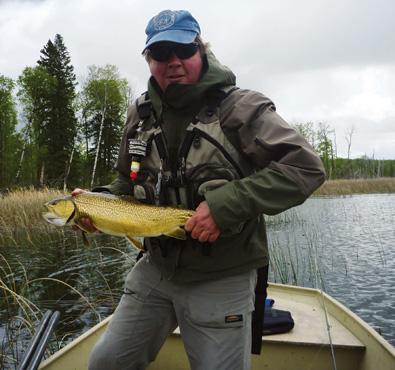How to increase your chances of hooking a monster
Advertisement
As top-of-the-food-chain predators, tiger trout are aggressive fish—and that makes them relatively easy targets for anglers. As with all trout fishing, however, some patterns and techniques will work better than others, depending on the time of year, weather conditions, water temperature, location and insect hatches. Here’s how to maximize your chances of hooking a monster tiger trout on Manitoba’s Twin Lakes.
Best season
Spring and fall are generally best, as the hot summer months can drive tigers down the water column and make them sluggish. In early spring, after ice-out, the fish tend to congregate in the relatively shallow, tight confines of the north lake, which can result in spectacular double-digit days.
Advertisement
Best weather
During the hot summer months, in particular, cool weather is better than hot, cloudy is better than sunny, and windy is better than calm. The hours immediately following rain can be especially productive.
Best location
Start by working shorelines of the main lake, anchoring at hot spots. Make a couple of drifts through the middle, where big fish occasionally suspend in large numbers. On the north lake, use an electric trolling motor to silently cruise the weedbeds and beaver dams.
Best flies
When tiger trout are active, they’ll eagerly chase mid-size Woolly Buggers in black and olive; backswimmer and water boatman imitations in sizes 12 and 14; and a number of Manitoba Parkland specialist patterns, including the Midnight Fire, Spear Lake Special and Psychedelic P-Quad (plain P-Quads work better during caddis hatches).
Advertisement
Mid-to-fast retrieves will usually trigger ferocious strikes. During the heat of the summer, when the trout are resting near the bottom and insects are hatching, small (size 16 or smaller) chironomid patterns in red, green, maroon, snow cone and black-and-silver can be deadly.
Best lures
Spin fishermen can use small floating Rapalas in silver, gold and perch patterns to target tigers hiding in the shallow marl along the reed beds. When the fish are in deeper water, small jig heads tipped with olive or chartreuse Twister Tails work, as do Little Cleo and Yellow & Red (Five of Diamonds) spoons in the smallest sizes.
Advertisement
Learn more: Guide Bob Sheedy

